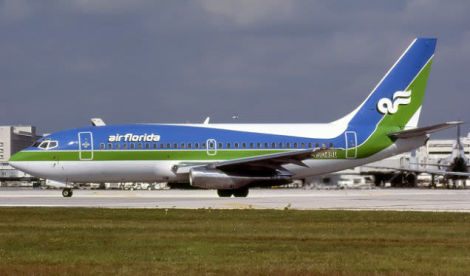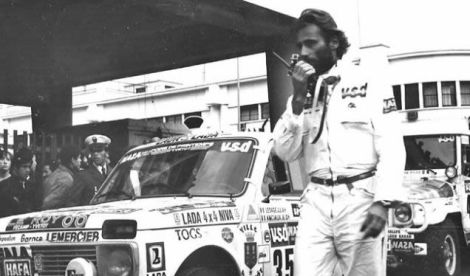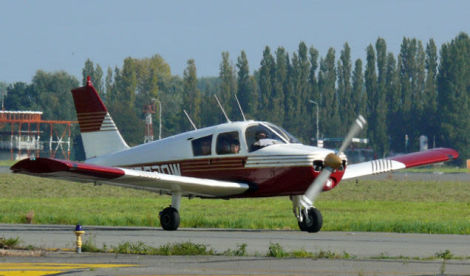Welcome to This Date in Aviation History, getting of you caught up on milestones, important historical events and people in aviation from January 12 through January 15.
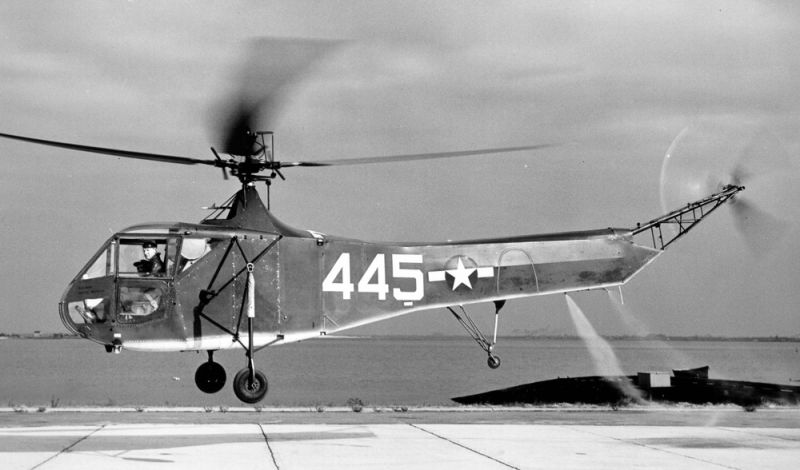
January 13, 1942 – The first flight of the Sikorsky R-4. We tend to think of the helicopter as a relatively recent invention, but as early as 1493, Leonardo da Vinci envisioned a vehicle that could take off and land vertically. He called it an “aerial screw,” and it worked on the same principal as a screw moving through water. It is unlikely that his invention would ever have worked, and he never made a model of it that we know of. But man’s fascination with vertical flight continued into the 20th century, and many aircraft designers attempted to create a vertical flying machine. The German aircraft builder Focke-Wulf created the first fully functioning vertical flying machine with the Fw 61, which used a dual rotor system that was capable of vertical, controlled flight. But it was Igor Sikorsky who ultimately perfected the helicopter we recognize today.
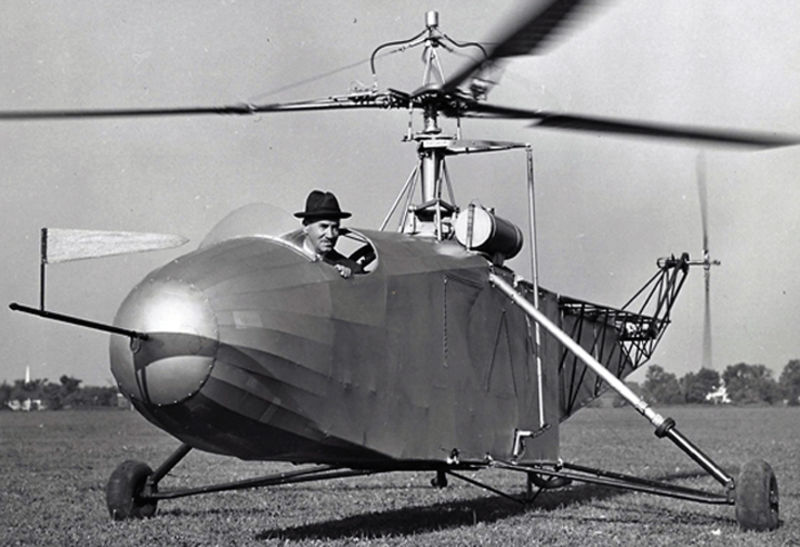
Sikorsky emigrated from Russia to the United States in 1919 after becoming a successful designer of large airplanes and flying boats. By 1938, he began working on the problem of vertical flight, and his efforts resulted in the VS-300, the first successful helicopter in the US to use a single lifting rotor, the first to use a single tail rotor to counter torque from the main rotor, and the first to power both rotors with a single engine. It took two more years for Sikorsky to perfect the VS-300, but the true breakthrough came with his development of cyclic control, which altered the angle of the rotor disc to allow the helicopter to move in all directions of flight. Having perfected this system of control, which is still used today, Sikorsky moved on to refining the VS-300 into a machine that he could sell to the US Army or, for that matter, anybody else who would buy it.
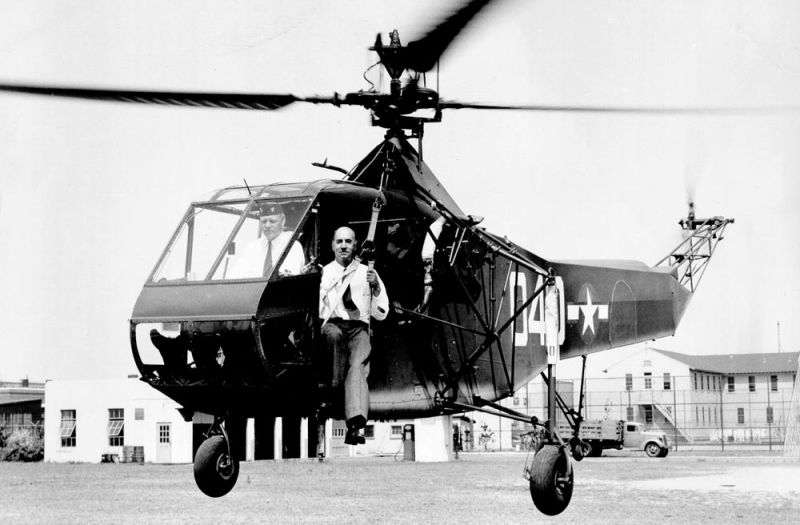
Sikorsky called his new machine the VS-316 and, like the VS-300, it was constructed from a frame of steel tubes. But the two-seat cockpit was completely enclosed with fabric, as was much of the fuselage. The first flight was made using a 165 hp Warner radial aircraft engine, but later models received a more powerful seven-cylinder Warner Scarab radial engine that produced 200hp and could propel the helicopter to about 75 mph with a ceiling of 8,000 feet. The Army tested first helicopter, designated the XR-4, and accepted the new rotorcraft in 1942. During the test regime, the XR-4 set records for endurance, altitude, and airspeed during a cross-country flight from Connecticut to Ohio. The flight covered 761 miles and the XR-4 as high as 12,000 feet and as fast as 90 mph.
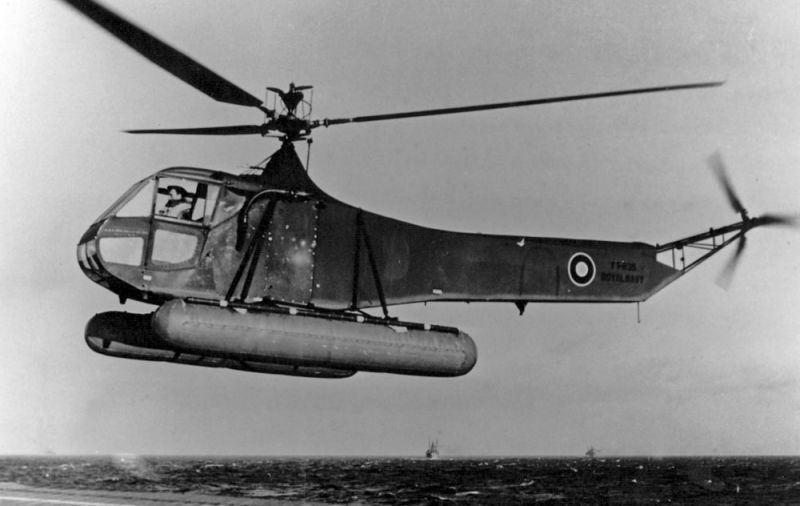
Following its acceptance by the Army, the R-4 became the first mass produced helicopter in the world. Sikorsky built 131 R-4s for the US Army, US Coast Guard, and the Royal Air Force, where it was known as the Hoverfly I. And, in a demonstration of how invaluable the helicopter would become in the future, US Army Lt. Carter Harman conducted the first combat rescue by helicopter in 1944, flying his R-4B to recover four members of an air crew that had crashed on a mountaintop in the China-Burma-India theater.
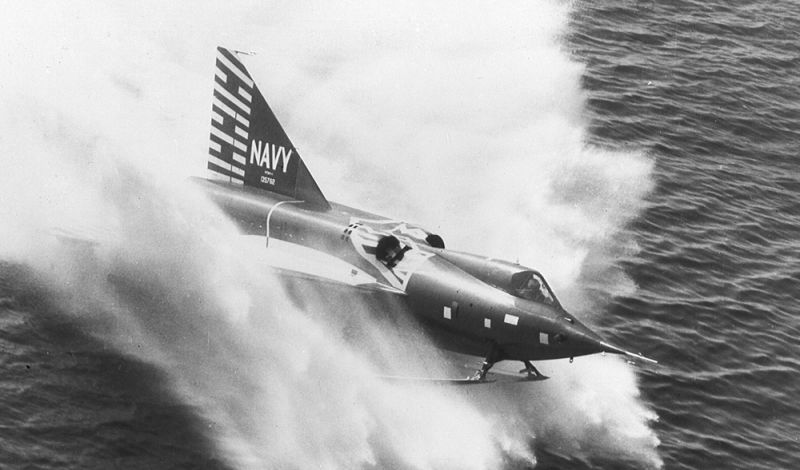
January 14, 1953 – The first flight of the Convair F2Y (YF-7) Sea Dart. With 71-percent of the Earth covered in water, it only made sense that aircraft designers would work to develop aircraft that could take off or land on the surface of the water. Runway space would be virtually unlimited, and transoceanic flights enjoyed an added measure of safety with the ability to land just about anywhere in case of emergency. Flying boat airliners began plying the skies in the 1930s, and seaborne fighter aircraft were developed during WWII, particularly by the Japanese, who operated them from their far-flung island bases. With the advent of the operational jet engine late in the war, Saunders-Roe, a company famous for flying boats, produced the SR.A/1, a jet powered seaplane fighter, in 1947. Not to be outdone, the US Navy issued a request for proposals in 1948 to develop their own waterborne jet fighter.
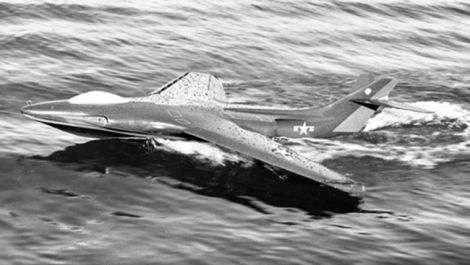
Convair had already been working on an internal project to create a jet that would use the shape of the wing and fuselage for buoyancy. Called the Skate, the aircraft progressed to the point of the construction of a flying scale model, though it bore little resemblance to the future Sea Dart. Nevertheless, Convair gained valuable experience in the seaplane fighter concept. At the same time, the National Advisory Committee for Aeronautics (NACA) was working on the concept of a seaborne fighter, and their work pointed toward retractable skis as being the best means of operating form the surface of the water. Not only would they be able to absorb the buffeting of takeoff and landing, the skis could be retracted in flight to reduce drag.

At the time of the Navy’s request, Convair was working on their delta-winged F-102 Delta Dagger, and it was this aircraft that formed the basis for the Sea Dart. In addition to mounting skis, other modifications were required, such as a reshaping of the fuselage to make it buoyant, and the movement of the air intakes aft and upward to avoid water ingestion. The Sea Dart also had two engines versus the Delta Dagger’s one.
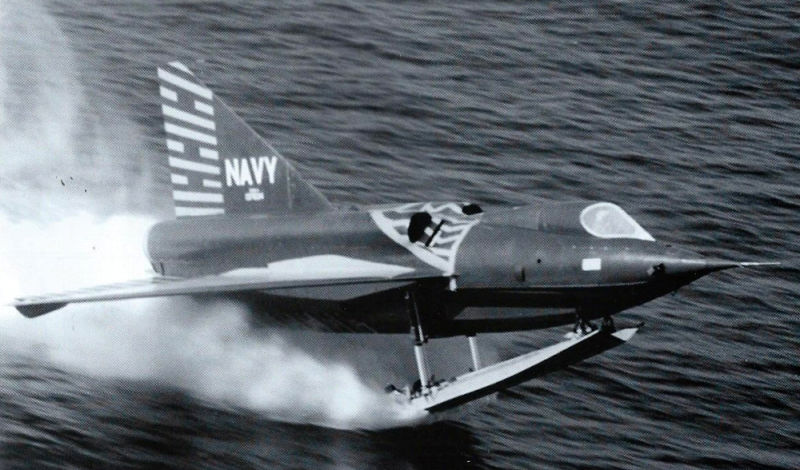
Testing began with a series of taxi tests, and it was during one of these tests that the Sea Dart left the surface of the water, making its unintentional first flight of about 1,000 feet. The official first flight was undertaken on April 9, 1953. This flight had been delayed because Convair was struggling with severe ski pounding as the Sea Dart accelerated on the water. Ultimately, engineers tried over 100 different ski shapes and shock absorber configurations as they tried to overcome the problem, and eventually determined that a single wide ski worked better than two narrower ones. But even when the Sea Dart got into the air, it could only manage a speed of Mach .99, and could only break the sound barrier in a shallow dive.
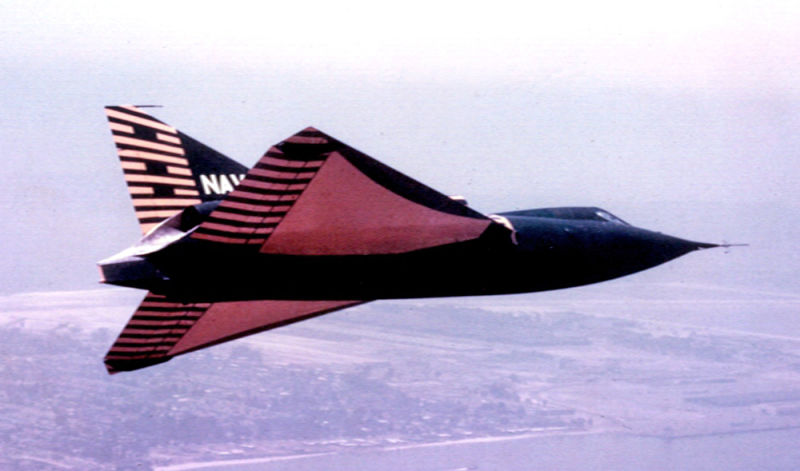
Convair considered a complete redesign of the Sea Dart, with a switch to a single, more powerful engine, and that aircraft would have received the designation XFY-2. However, a crash during a demonstration flight which killed Convair test pilot Charles Richbourg sealed the fate of the innovative fighter. The program was canceled, and the remaining four aircraft eventually found their way to museums around the country. Interestingly, even though the Sea Dart never entered production, the Navy still redesignated the aircraft as the YF-7 six years after its cancellation as part of the Tri-Service aircraft designation system adopted in 1962.
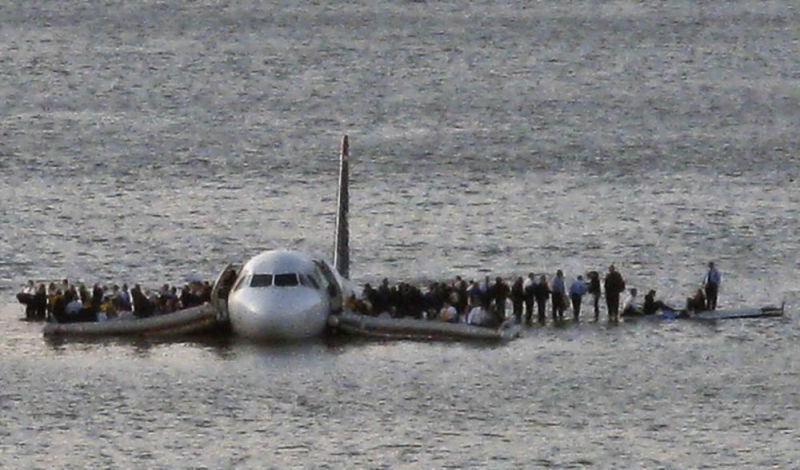
January 15, 2009 – US Airways Flight 1549 ditches in the Hudson River after bird strikes cripple both engines. When airplanes take to the skies, they must not only watch out for other aircraft. Planes have to share the skies with the birds who were there first, and bird strikes are a constant danger to pilots and aircraft—and birds, it must be said. Bird strikes can cause significant and often expensive damage, though it is rare that a bird strike will bring down an modern jetliner, in large part because modern jet engines are designed and tested to withstand the ingestion of birds. But rare doesn’t mean never, as the passengers and crew of US Airways Flight 1549 found out.
Flight 1549 was a regularly scheduled flight from New York’s LaGuardia Airport to Charlotte, North Carolina. At the controls of the Airbus A320 (N106US) that day were Captain Chesley “Sully” Sullenberger and First Officer Jeffrey Skiles, along with three flight attendants and 150 passengers. Roughly three minutes after takeoff, while climbing out from LaGuardia, the Airbus flew through a flock of large Canada geese and both engines quickly lost power as the airliner passed near the George Washington Bridge over the Hudson River. Skiles was flying the plane when it struck the birds at approximately 2,800 feet, and Sullenberger took over the controls while Skiles started the emergency checklist for restarting the engines. Their immediate need was to find a place to land safely, as altitude and airspeed were quickly dropping away.
Once alerted to the emergency, ground controllers held all traffic and suggested that the crew return to LaGuardia. Sullenberger quickly assessed the situation and realized that they would never make it back, so he suggested Teterboro Airport in New Jersey. But Teterboro was too far away. Seeing a water ditching as their only hope, Sullenberger calmly told controllers, “We can’t do it. We’re going to be in the Hudson.” As the stricken airliner passed less then 900 feet above the George Washington Bridge, Sullenberger told the passengers to brace for impact and gently set the A320 down on the surface of the Hudson River off Midtown Manhattan. From bird strike to landing, only three minutes had elapsed.
Despite large holes being ripped in the fuselage on impact, the Airbus remained afloat, drifting slowly downstream with the current. Passengers escaped through the overwing emergency exits and waited calmly on the wings for rescue. At the front of the aircraft, other passengers filled exit slides that acted as life rafts when inflated. Ferry boats and other civilian watercraft responded immediately to the ditching, and the first rescue boats arrived four minutes after the plane touched down. Ultimately, all 155 passengers and crew were rescued. Only five were treated for significant injuries, while a few others were treated for hypothermia.
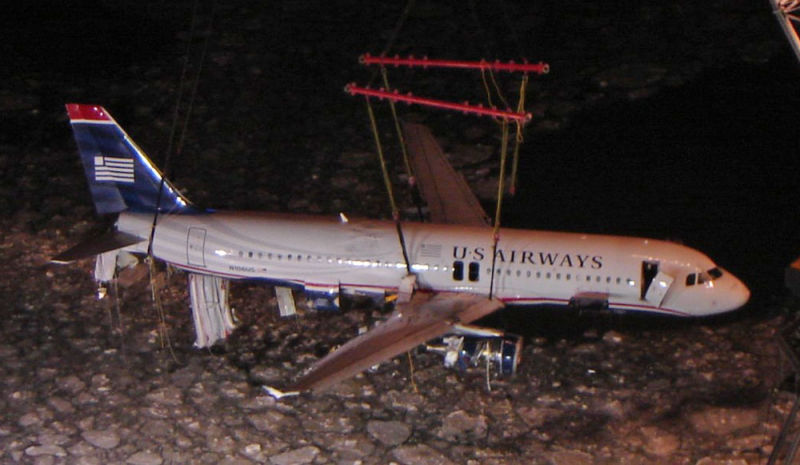
The NTSB investigation determined the probable cause of the accident to be “the ingestion of large birds into each engine, which resulted in an almost total loss of thrust in both engines.” But they also cited a number of factors that led to the best possible outcome for the plane. The flight crew benefited from excellent visibility, and numerous boats on the busy river aided in the swift rescue of passengers. The Airbus also had more safety gear on board than regulations require, and the entire crew exercised excellent crew resource management during the emergency. For their actions, the entire crew received the Master’s Medal of the Guild of Air Pilots and Air Navigators, and NTSB member Kitty Higgins described the landing as “the most successful ditching in aviation history.” The A320 was recovered from the water and formerly resided in the Carolinas Aviation Museum in Charlotte, North Carolia, which is currently looking for a new location to house its collection.

Short Takeoff
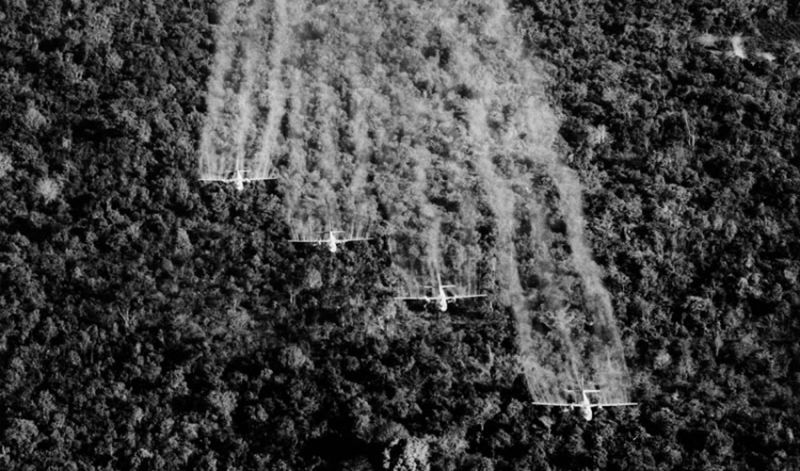
January 12, 1962 – The US Air Force begins Operation Ranch Hand. Operation Ranch Hand was a part of the larger Operation Trail Dust which sought to spray chemical defoliants over the dense jungles of South Vietnam in an effort to expose the movements of Viet Cong troops and destroy crops. The most widespread chemical defoliant used was nicknamed Agent Orange, and over a ten-year span more than 20,000 sorties were flown over the countryside of South Vietnam, most by formations of Fairchild C-123 Provider cargo aircraft each carrying 1,000-gallon tanks of the herbicide. By the end of operations, approximately 11.2 million gallons of Agent Orange were sprayed, while 5 million acres of forest and 500,000 acres of crops were heavily damaged or destroyed. The chemicals found in the defoliants were later traced to cancers and birth defects among those who came in contact with them, both Vietnamese civilians and US military personnel alike. Tactically, the use of defoliants was largely unsuccessful.
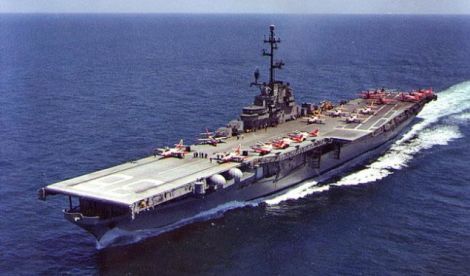
January 12, 1953 – The US Navy begins operational flights from the USS Antietam (CV-36), the first carrier to feature an angled deck. Earlier aircraft carriers had straight decks that were fine for propeller aircraft, but the higher landing speeds of jet aircraft made such an arrangement much more dangerous. The idea for an angled flight deck was first proposed by Royal Navy Captain Dennis Campbell, but it was the Americans, with Antietam, who first proved the benefits of this design when a sponson was added to support the overhanging, angled deck. Existing Essex and Midway class carriers were retrofitted with angled decks, while the first purpose-built American angled deck carrier came with the Forrestal class. The first British carrier constructed with an angled deck was HMS Ark Royal (R09).
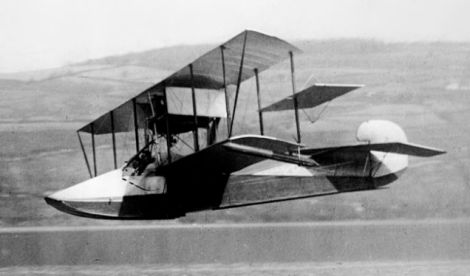
January 12, 1912 – The first flight of the Curtiss Model F, a pre-WWI flying boat developed by Curtiss and flown in large numbers by the US Navy, becoming the standard flying boat trainer in 1917. The biplane aircraft had a crew of two and was powered by a single engine powering a pusher propeller. More than 150 Model Fs were produced in a total seven variants, and, in addition to the US Navy, the Model F was flown by Brazil, Italy, England and Russia, who ordered two batches of the flying boat.

January 13, 2009 – The death of Nancy Bird Walton, a pioneering Australian aviatrix and the founder and patron of the Australian Women Pilots’ Association. Walton was born in 1915, and at the age of 19 she became the youngest Australian woman to earn a pilot’s license. After purchasing her first aircraft, a de Havilland Gipsy Moth, Walton, along with friend Peggy McKillop, began a barnstorming tour of Australia and later formed the Royal Far West Children’s Health Scheme, an aerial medical service that covered territory not reached by other flying medical services. The first Qantas Airbus A380 was named in her honor.
January 13, 1982 – The crash of Air Florida Flight 90 crashes moments after takeoff from National Airport in Washington, DC. Prior to takeoff for a flight to Miami in snow and icing conditions, the pilots of the Boeing 737-200 (N62AF) failed to utilize the internal ice protection systems on the engines, and used reverse thrust while leaving the gate, an action which may have clogged the engines with ice. After waiting to take off, and building up more snow on the wings, the pilots opted not to return to the de-icing station despite indications that the engines were not performing properly and despite the snow and ice that had built up on the wings. Shortly after takeoff, the 737 crashed into the 14th Street bridges over the Potomac River, killing 74 passengers and crew, as well as four motorists on the bridge. Five passengers survived. The NTSB cited the crew’s inexperience with icing conditions, and the build up of ice and snow on the wings’ leading edges, as the cause of the crash.
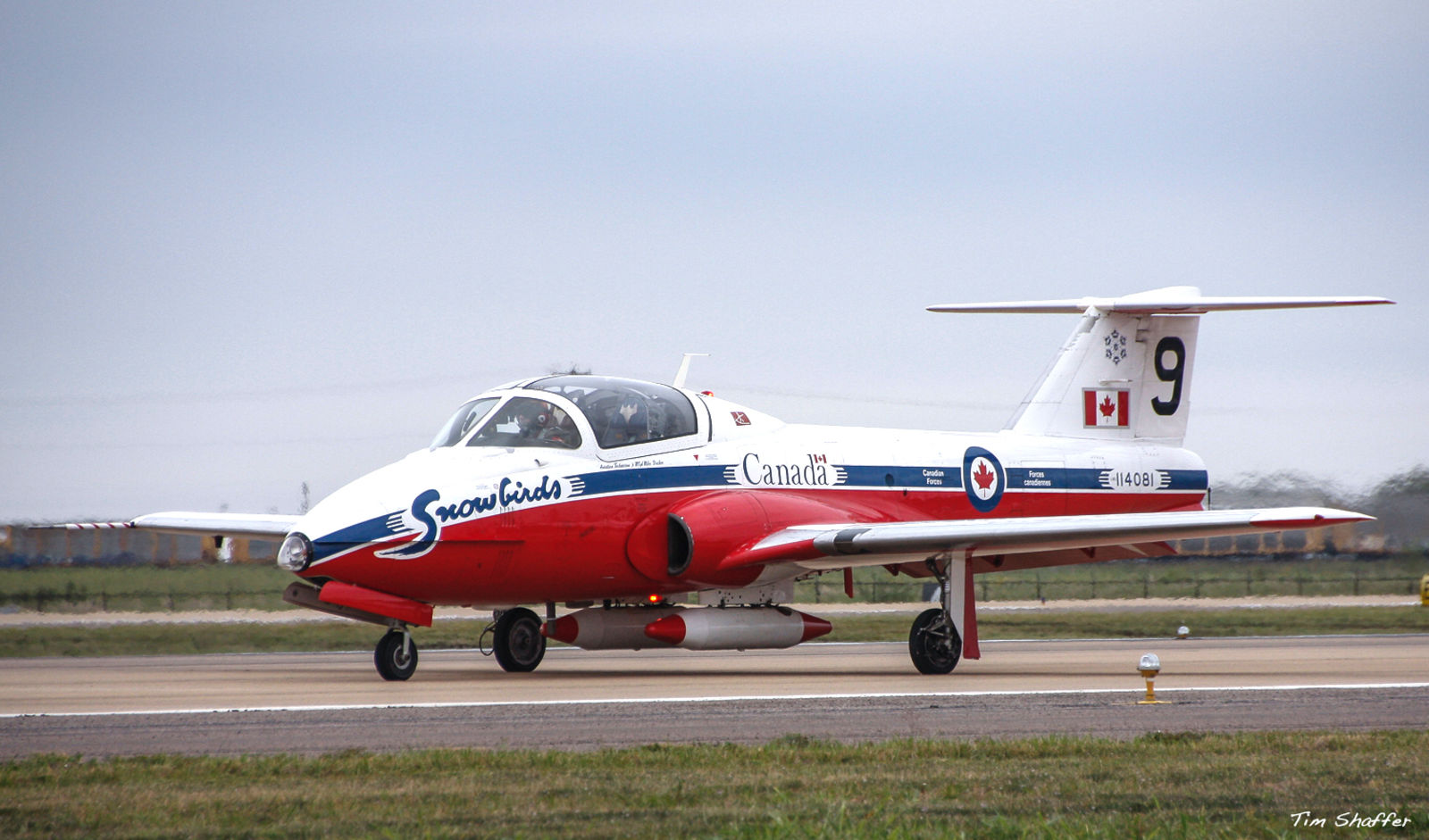
January 13, 1960 – The first flight of the Canadair CT-114 Tutor, the standard Canadian jet trainer from the early 1960s until its retirement in 2000. Strongly resembling the Cessna T-37 Tweet, the Tutor is powered by a pair of Orenda J85 turbojet engines, the Canadian-built version of the General Electric J85. Its straight wings provide excellent low-speed handling, and the design of its vertical stabilizer is intended to help students learn how to recover from a spin. An armed attack version was also developed for the Malaysian air force. Though the Tutor was retired from training duties in 2000 and replaced by the CT-155 Hawk and CT-156 Harvard II, it remains in service with the Canadian Forces Snowbirds flight demonstration team.
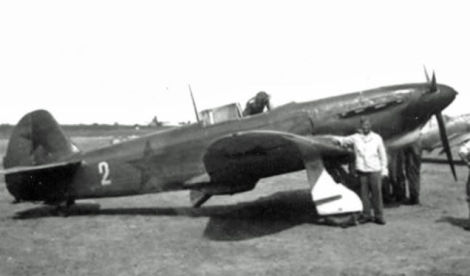
January 13, 1940 – The first flight of the Yakovlev Yak-1, a single-seat fighter that served Russia in large numbers during WWII. Despite early teething problems with the design, particularly with oil overheating issues, the Yak-1 was nevertheless an agile and heavily armed fighter that outperformed most of the enemy aircraft it faced, particularly at lower altitudes where it served as an escort for Ilyushin Il-2 Sturmovik attack aircraft. A total of 8,700 Yak-1s were built during the war and, when included with its variants, the Yak-3, Yak-7 and Yak-9, more than 37,500 aircraft were built.
January 14, 1986 – The death of Thierry Sabine, wrangler, motorcycle racer and founder of the Paris-Dakar Rally. Sabine was a passenger in a Eurocopter Ecureuil helicopter when it crashed into a sand dune in Mali during a sudden sandstorm. Also killed were singer-songwriter Daniel Balavoine, pilot François-Xavier Bagnoud, journalist Nathalie Odent and RTL radio engineer Jean-Paul Lefur. Despite Sabine’s death, the Dakar Rally continues today, though it now is held in South America.
January 14, 1960 – The first flight of the Piper PA-28 Cherokee. The Cherokee is a family of light aircraft that was designed for personal use, flight training and as an air taxi. The all-metal, unpressurized monoplane received its type certification in 1960, and was subsequently developed into the Arrow, Archer, and Dakota Warrior variants seating either two or four passengers and with either fixed or retractable landing gear. More than 37,500 aircraft of all variants have been built since production began in 1961, and production continues to this day.

January 14, 1950 – The first flight of the Mikoyan-Gurevich MiG-17. The MiG-17, NATO reporting name Fresco, entered production in 1952 as an improvement over its predecessor, the MiG-15. Development began in 1949 as an effort to fix deficiencies in the earlier fighter discovered during fighting in Korea. The MiG-17 became one of the world’s most successful transonic fighters, and served into the 1960s. The Fresco also saw action in Vietnam, where its pilots claimed 28 kills against American aircraft. Like other Russian fighters of its era, it eschewed machine guns in favor of a mix of 37mm and 23mm cannons. More than 11,000 MiG-17s were built by Russia, Poland and China.
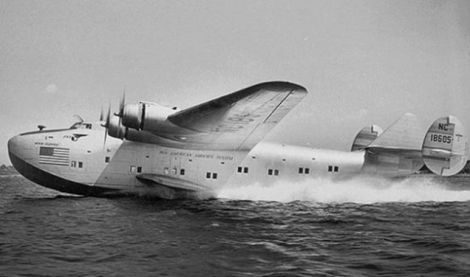
January 14, 1943 – Franklin D. Roosevelt becomes the first sitting President of the United States to travel by airplane. WWII was a truly global conflict, and in order for the leaders of the Allied powers to meet in a timely manner, it was necessary for the US President to fly to Casablanca in North Africa for a conference with British Prime Minister Winston Churchill and Russian General Secretary Joseph Stalin. Roosevelt made this historic 15,000 mile round trip in a Boeing 314 flying boat named Dixie Clipper, becoming the first sitting president to fly in an airplane (Theodore Roosevelt flew before FDR, but he had left office before his flight). While in Africa, Roosevelt also traveled on a US Army Douglas C-54 Skymaster. It wouldn’t be until the presidency of Roosevelt’s successor, Harry Truman, that presidential air travel became commonplace.
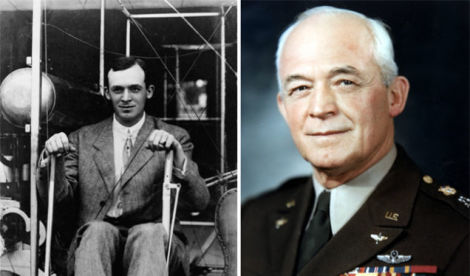
January 15, 1950 – The death of Henry Harley “Hap” Arnold. Born in 1886 in Gladwyne, PA, Arnold was an American aviation pioneer who took flying lessons from the Wright Brothers, was one of the world’s first military pilots, and was one of the first three rated pilots in the history of the US Air Force. During WWI, Arnold oversaw the expansion of the US Army Air Service, and was a student of strategic bombing proponent Billy Mitchell. During WWII, Arnold served as Commanding General of the US Army Air Forces, was the only Air Force general to hold a five-star rank, and the only general to hold a five-star rank in two different U.S. military services (US Army Air Forces and the US Air Force).
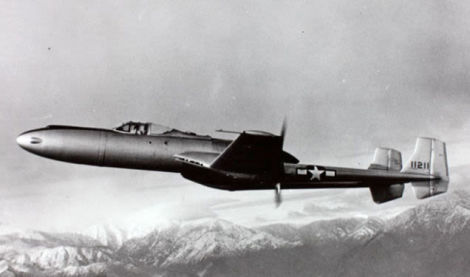
January 15, 1943 – The first flight of the Vultee XP-54, nicknamed Swoose Goose, one of the radical designs that came out of the US Army’s R-40C request for aircraft that pushed the boundaries of aircraft design at the time. Originally designed as a heavily armed, high speed fighter, lackluster performance from the underpowered engine caused the concept to be changed to that of a heavily armed interceptor. The XP-54 featured a unique nose that could be raised or lowered depending on whether the machine guns or cannon, with its lower muzzle velocity, was being fired. Two prototypes were built before the project was canceled.
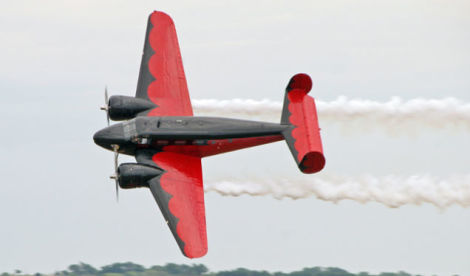
January 15, 1937 – The first flight of the Beechcraft Model 18, a light, twin engined aircraft produced by Beech from 1937 to 1970, a production run that set a world record for its time. During WWII, more than 4,500 Beech 18s saw service with the US Army Air Forces where it was designated the C-45 Expeditor, AT-7 Navigator and AT-11 Kansan, and the US Navy, where it was known as the UC-45J Navigator and the SNB-1 Kansan. Over 90-percent of Army Air Forces bombardiers and navigators trained in the Beech 18. Following the war, the Beech 18 became a popular executive aircraft, served as a small airliner, and was used in all manner of testing and commercial flying. More than 9,000 were built during its 23-year production run, and many still fly today, with some even being used for aerobatics.
Connecting Flights
If you enjoy these Aviation History posts, please let me know in the comments. And if you missed any of the past articles, you can find them all at Planelopnik History. You can also find more stories about aviation, aviators and airplane oddities at Wingspan.
